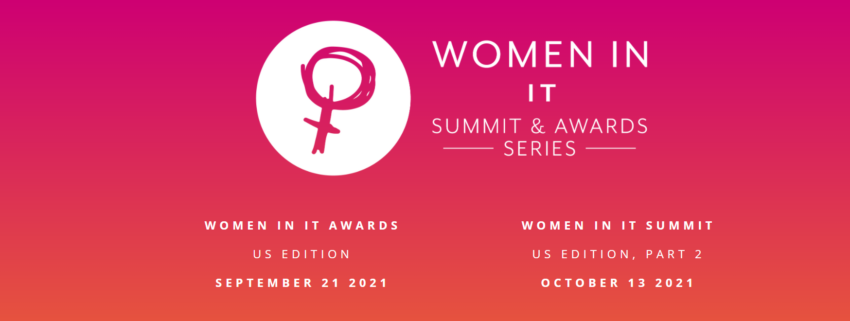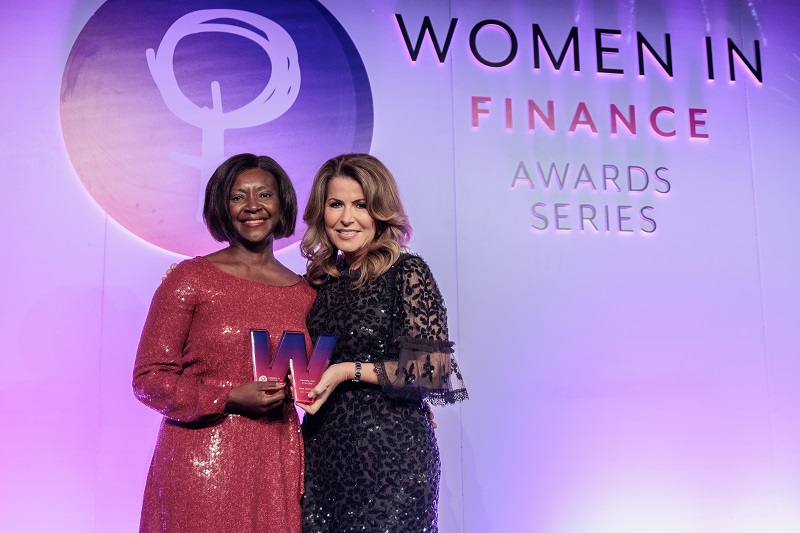The Women in IT USA Summit took place online to an eager audience wanting to know what had changed in the US tech ecosystem for women including those at the intersections of that identity.
Women in IT USA Summit – intersectional approaches
The first session of the day during the Women in IT USA Summit was “Transgender & Non-Binary Inclusion in Tech”, the speakers were Heather Norris, Principal Diversity, Equity & Inclusion Strategy Consultant, Red Hat, M Sigma, Innovation Executive, Research, Salesforce, Ginger Chien, Device Architect, AT&T and Aryah Lester, CEO, Lester, West & Associates Branding and Management.
Transgender and non-binary inclusion
Norris said working at Red Hat has made them feel accepted and safe where they have joined their Pride network group. Norris added that while many tech firms are doing well by including transgender and non-binary employees, globally there’s more work to be done.
Norris also said partnering with external consultants to provide teams with inclusion training is a good idea, where buy-in from senior leadership on education is key, even if they don’t have the answers yet.
Chien said the tech industry has “harvested a lot of the low hanging fruit” but the productivity and retention gains “will not be found in those easy places.”
She advised that firms “look up” in order to make progress in the untapped areas. She also said there’s a language issue within tech firms when trying to include this community where “passive silence is active ground for exclusion.”
Use of language has to be carefully used, they added, as used in the wrong way can be just as exclusionary. They also said that companies should be proud of their inclusion policies and prove they have faith in their convictions.
Sigma said that people need to stop thinking of heterosexuality “as a default” which they remind the audience isn’t the lived experiences of people from the LGBTQ+ community. They also said that seeing cis-heteronormativity as the norm is a form of violence against their community.
Norris added that being “cis-het” is often seen as fitting the model of “normality and success” which people are encouraged to emulate at work.
Sigma also said that in terms of language, pronoun usage is good, but it is only the start. They added that the more people outside of the community in the workplace use them, the more likely it is that others will feel safe coming out at work.
Then followed a live Q&A discussion entitled “Where Neurodiversity & Technology Meet”, the speakers were Yonah Welker, Explorer, Board Member, Yonah.ai and Adrienne Renee Rutledge, Senior Associate, EY.
Neurodiversity and tech
Welker said new technologies can benefit everyone, not just those with neurodiverse conditions or other disabilities, such as augmented reality.
Welker also said there needs to be more focus in the user experience (UX) space, where creators need to think about the way neurodiverse people use technologies, where this more open approach can help developers think about inclusion across other groups, such as stopping racial bias in facial recognition software.
Rutledge said it’s important that firms re-examine the recruitment process, where neurodiverse individuals may be less good at the social aspects, such as during an interview, but then fail to gain a position that they could be perfect for because of that, adding that firms should be careful of judging a candidate just on this aspect.
“Introducing the New Face of Good Leadership” was another standout session of the day, the speakers were Robert Johnson, Global Diversity, Equity & Inclusion Practitioner and Leadership Coach, and Stephanie Ginos, Director, Technology Operations Shared Services Leader, EY Technology.
Good and inclusive leadership
Ginos said that leadership styles have to evolve “for the times we are in.” Johnson said that leadership is multifaceted where you can still learn from leaders who are “finding their way.” However, he said they must evolve and go for “progress over perfection” and be introspective.
Ginos said good leaders must think of their people as individuals including acknowledging what makes them unique and the different skills they bring. Ginos also said getting to know people is good for productivity but also helps leaders understand what’s important to staff and helps them be seen, which is good for diversity and inclusion especially if members of staff are from underrepresented groups.
Johnson agrees that leaders must understand their people and what matters to them, this includes being “consciously inclusive” and having one-to-one sessions to understand their personal ambitions. He calls this having “key people indicators” as opposed to the usual “key performance indicators.” He also said adjusting and accomodating for different employee needs is also important, such as when one employee may benefit from more frequent interactions than another.
Ginos added that a good leader will look for talent that has gifts that are different from theirs. Johnson agreed and said that good leaders understand they need a team with diversity of thought which increases innovation, customer and employee experience.
Johnson added that it is important for leaders to be their “authentic selves” as this will encourage their employees to show up authentically too.
To register for the upcoming Women in IT Summit Canada, click here.
In this article, you learned that:
- If the entire workforce starts using pronouns, it’s likely that members of the LGBTQ+ community will feel more accepted at work.
- Firms should re-examine their recruitment process to accommodate neurodiverse candidates and put less emphasis on social aspects such as the interview stage.
- Good leaders get to know their team as individuals and frequently check in about their personal ambitions.









